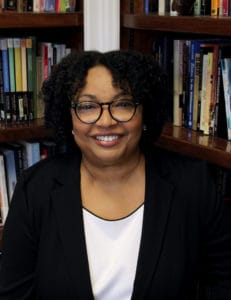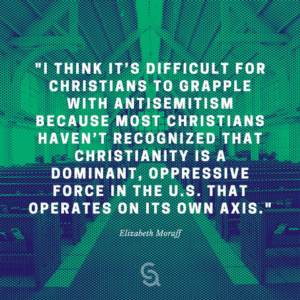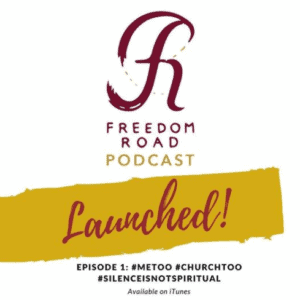 Reading with an eye toward questions of race relations and gender arrangements will inevitably involve having our eyes drawn to the situations, stories, and characters in the biblical texts that depict intergroup conflict and those that feature women.
Reading with an eye toward questions of race relations and gender arrangements will inevitably involve having our eyes drawn to the situations, stories, and characters in the biblical texts that depict intergroup conflict and those that feature women.
For example, the case of the widows and disciples in Acts 6:1-6 seems analogous with, though not identical to, modern discourse about restorative justice. The story is about vulnerable Greek-speaking widows from the Jewish diaspora overlooked by the local Aramaic-speaking Jews in the daily distribution of food.
The story also involves ethnic differences mediated via language (Greek vs. Aramaic) and geographical difference (Judeans vs. non-Judeans), characteristics that contributed to the minority status occupied by the impoverished widows and which may also have led to their marginalization in the food distribution.
To solve the problem, the apostles appoint seven men to oversee the distribution. Notably, the men promoted to lead the food distribution more equitably had Greek names, thus presumably sharing some of the lived experiences of those overlooked Greek widows. Presumably, they would have identified with the widows’ circumstances and been less inclined to neglect their needs.
Other interpreters are puzzled that these new, well-qualified leaders are instructed to confine their activity to “serving tables” (Acts 6:2). Mitzi Smith notes the hierarchy that seems to be at work in the text, highlighting how the disciples assign the seven Greeks to the more menial task of serving at tables while they continue the vital task of preaching and teaching. Have the Jews from outside of Judea been assigned to lower status positions? Is there an ethnic hierarchy at work?
Hence, the story rhymes with elements in the discourse about contemporary affirmative action that seeks to elevate persons from resource-constrained minority communities as a way of redressing a presenting inequity while more privileged others continue to reserve for themselves the most desirable work and reward structures.
By contrast, Demetrius Williams sees a liberative element here. He observes the appropriateness of the fact that the Greek-speaking Philip and Stephen are the ones who take the first steps in moving the boundaries of the early Christian movement beyond Jerusalem. Hence reading Williams together with Smith would imply that while the apostles hire the Seven to do the most menial of tasks, the assignment nonetheless left them well-placed for advancement into a growth opportunity of evangelism in the diaspora. This reading would reprise the biblical theme that God works through the marginalized, the least of these, the youngest, and the last one chosen.
Though some interpreters see this as a story about the appointment of new leaders in a diaconate (cf. Num. 11), the comment about growth in Acts 6:1 (“Now during those days, when the disciples were increasing in number”) suggests that Luke thought that the conflict imperiled growth in the early Jesus community, perhaps by alienating diaspora Jews.
The similar and bracketing growth comment in 6:7 (“the number of the disciples increased greatly in Jerusalem, and a great many of the priests became obedient to the faith,” AT) suggests that the solution empowered additional growth among the priestly class.
In other words, it may be that the harmonious resolution of the ethnic conflict over resource sharing in the story paid off by increasing the winsomeness of the early Christian movement, attracting a group from the people’s leadership class who were the most learned and pious among them.
Affirmative action in contemporary life shares some of these dynamics since it too attempts to redress neglect and lack of access to vitally important resources.
One might also say that as a very conservative approach to redressing centuries of stolen wages lost in slavery, affirmative action is also a solution that harmoniously seeks to reduce ongoing ethnic conflict.
Nevertheless, though it has significant differences with this simple story and does not address the complexities of modern racial discrimination, the idea that something like affirmative action has a place in the center of what it means to be a Christian community via Acts 6 is compelling.
Acts 6 thus not only prepares for stories about the movement’s growth beyond the tight ethnic circle in Jerusalem, but it is also at least partly about creating safety for a minority community amid the hostility or inhospitableness of a majority culture.
Excerpted from Race and Rhyme: Rereading the New Testament by Love Lazarus Sechrest ©2022 (Wm. B. Eerdmans Publishing Co.). It appears here by permission of the publisher.

Love Lazarus Sechrest is associate provost for program development and innovation and professor of theology at Mount St. Mary’s University. Her scholarship is centered on womanist and African American biblical interpretation and New Testament ethics; she co-chaired the Society of Biblical Literature’s African American Biblical Hermeneutics Section from 2012 to 2017 and gives presentations on race, ethnicity, and Christian thought in a variety of academic, church, and business contexts. She is the author of A Former Jew: Paul and the Dialectics of Race and Can “White” People Be Saved? Triangulating Race, Theology, and Mission. A second-career scholar, she previously worked as a senior manager in the aerospace industry at General Electric.


